Lacerta bilineata
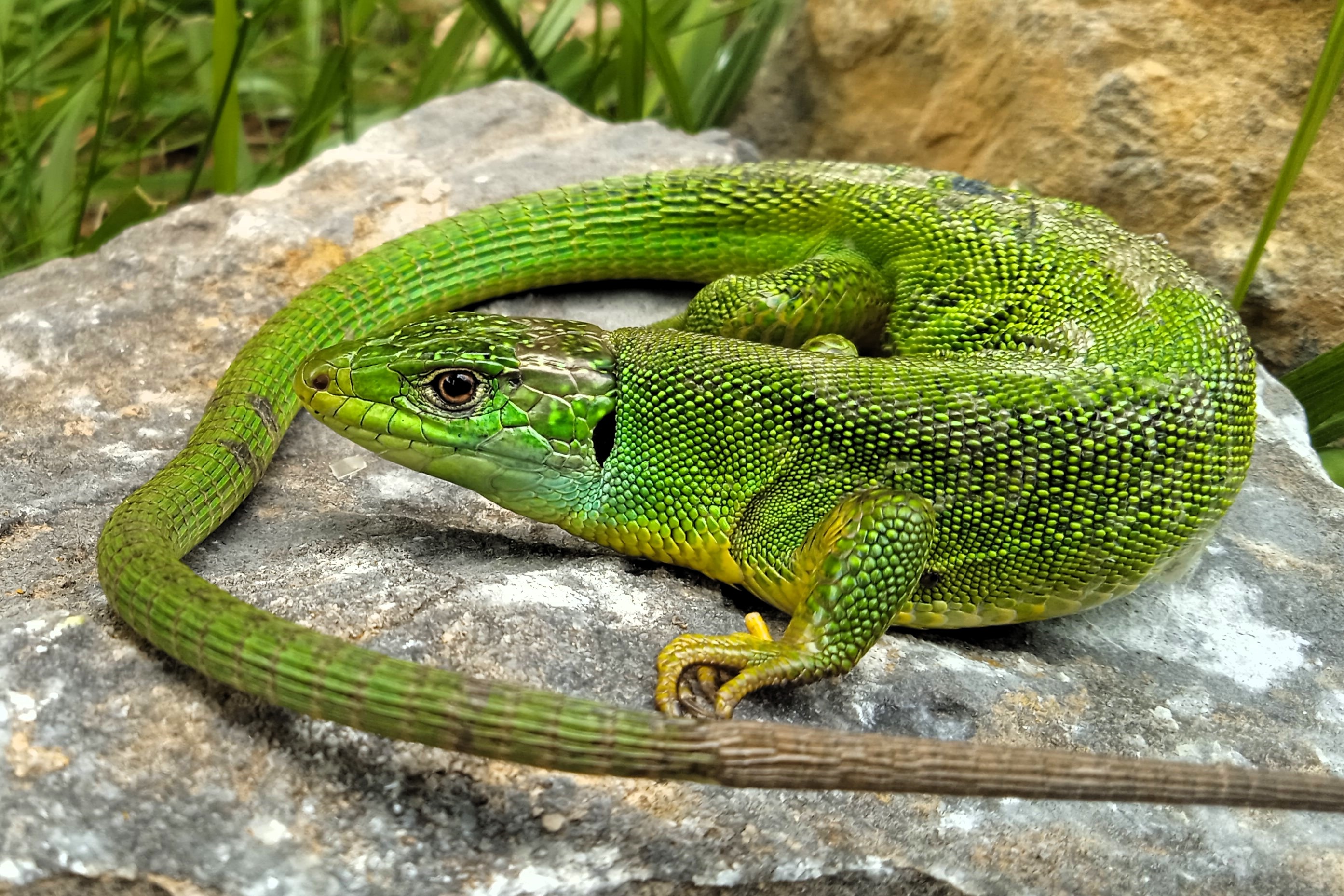


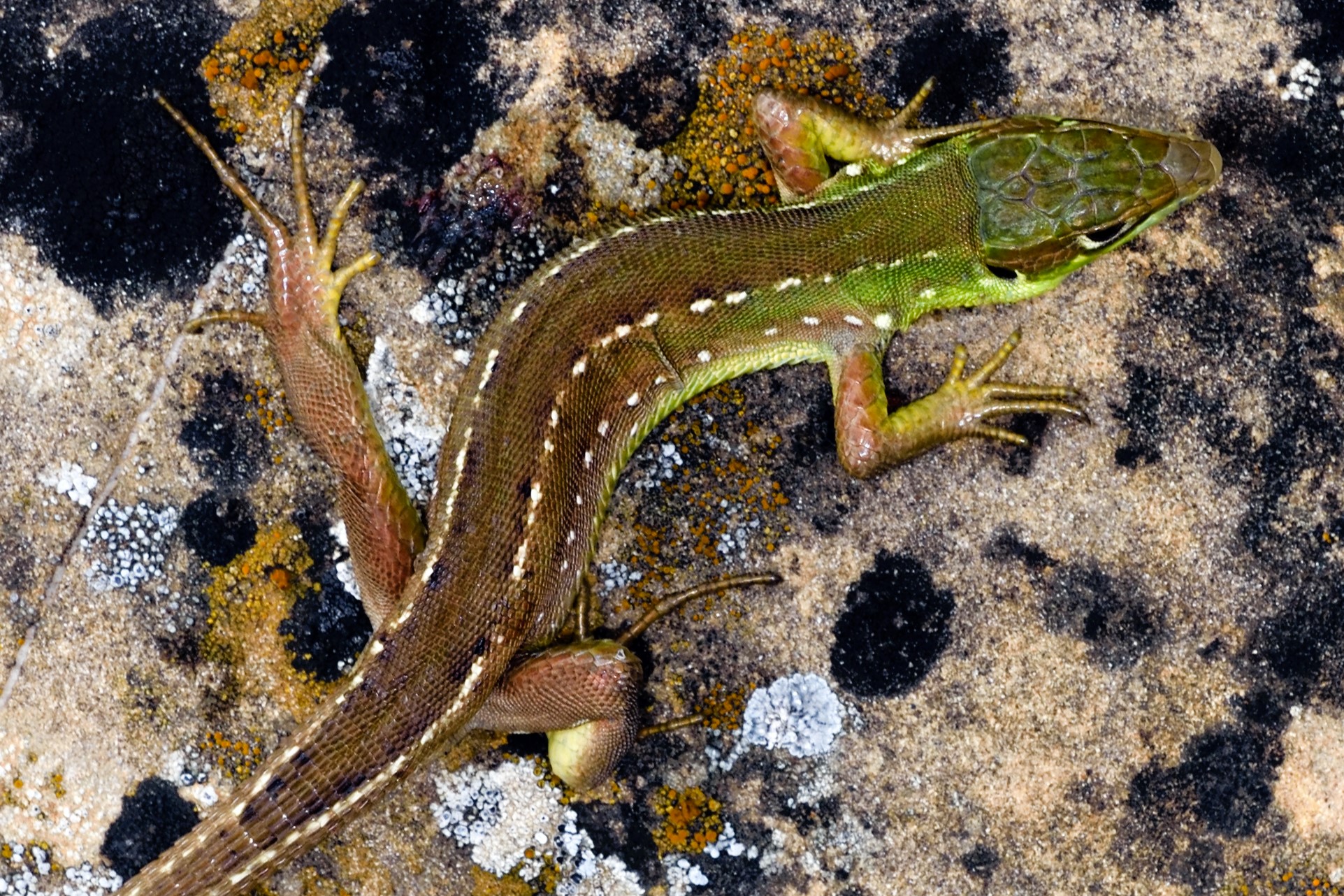
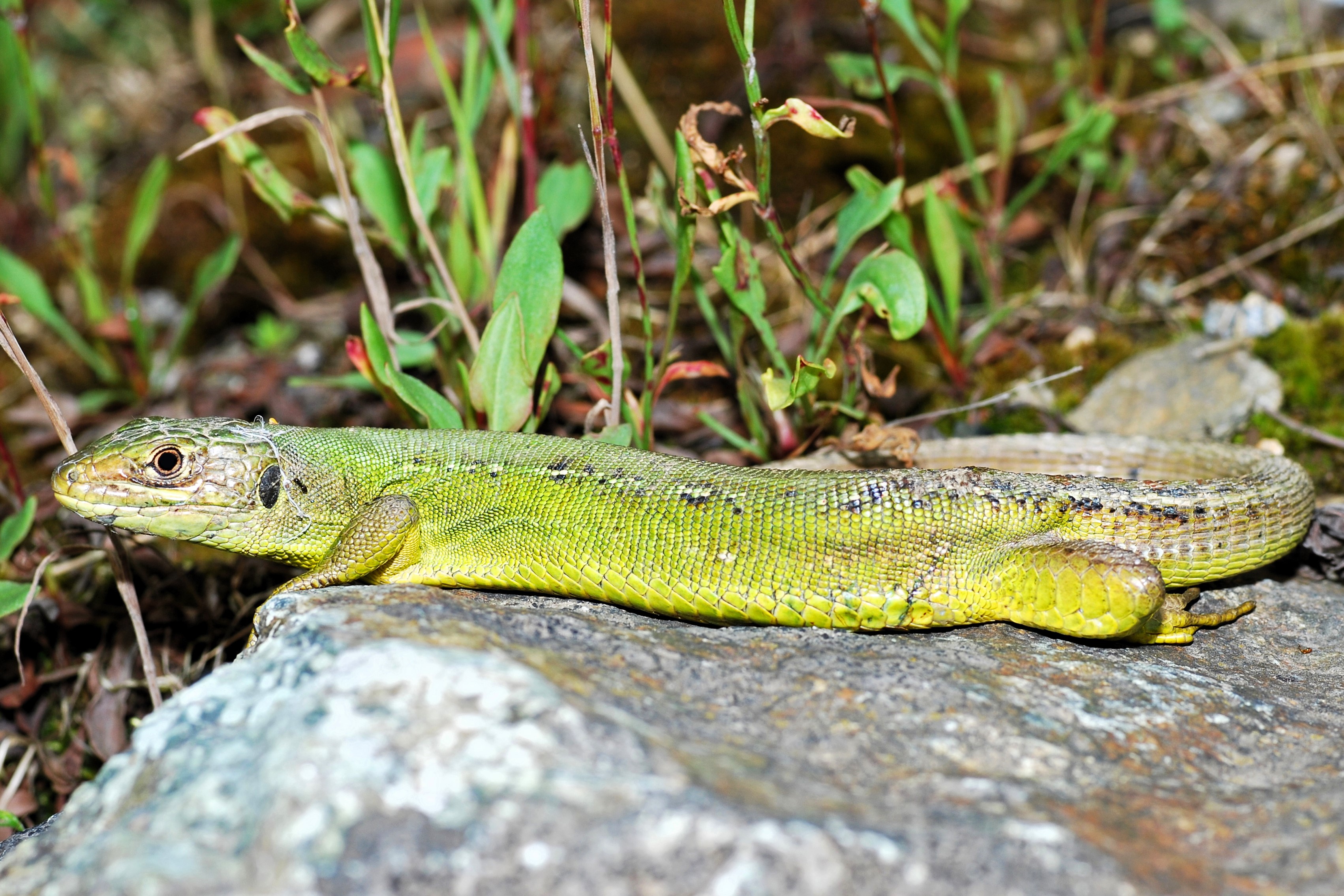
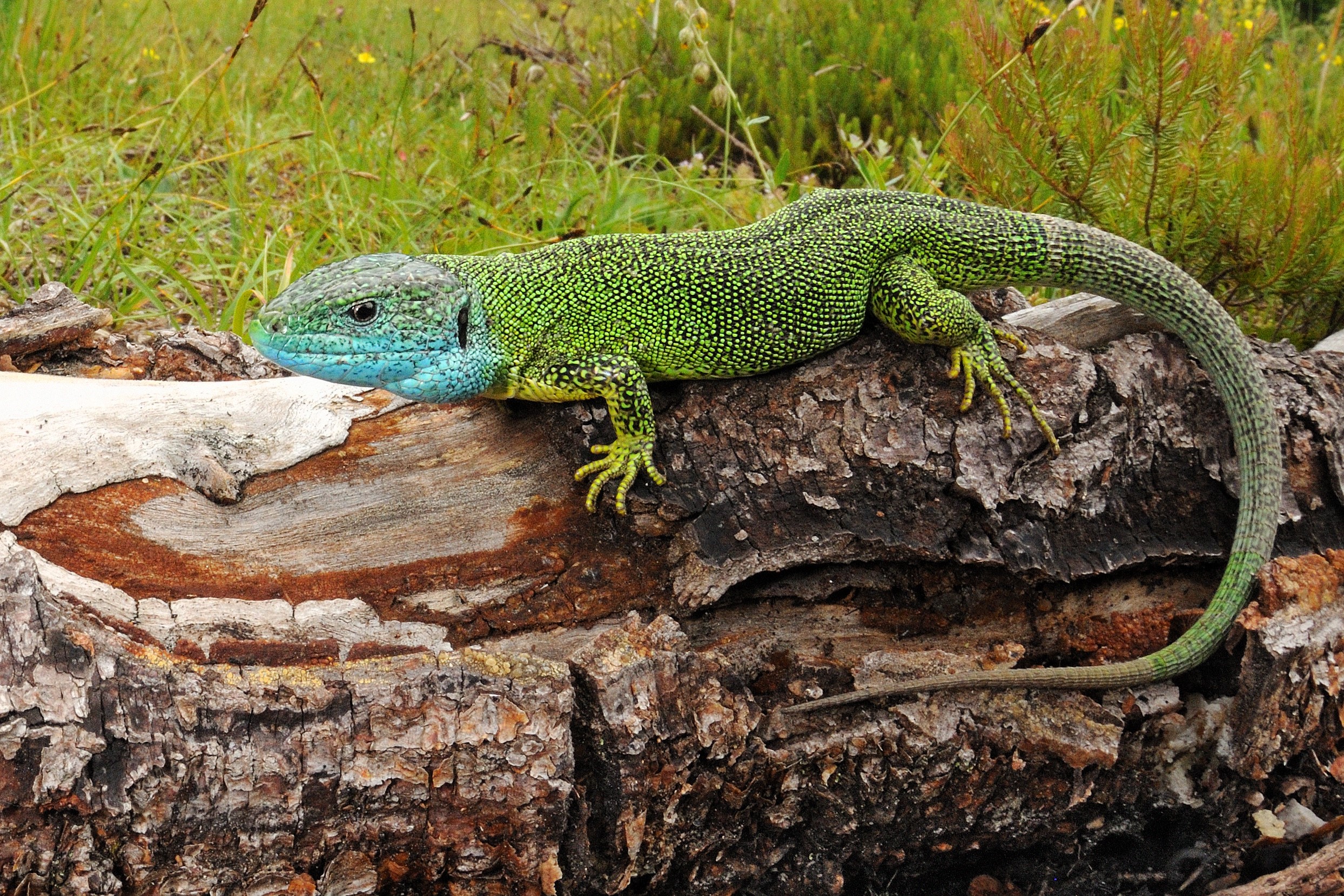
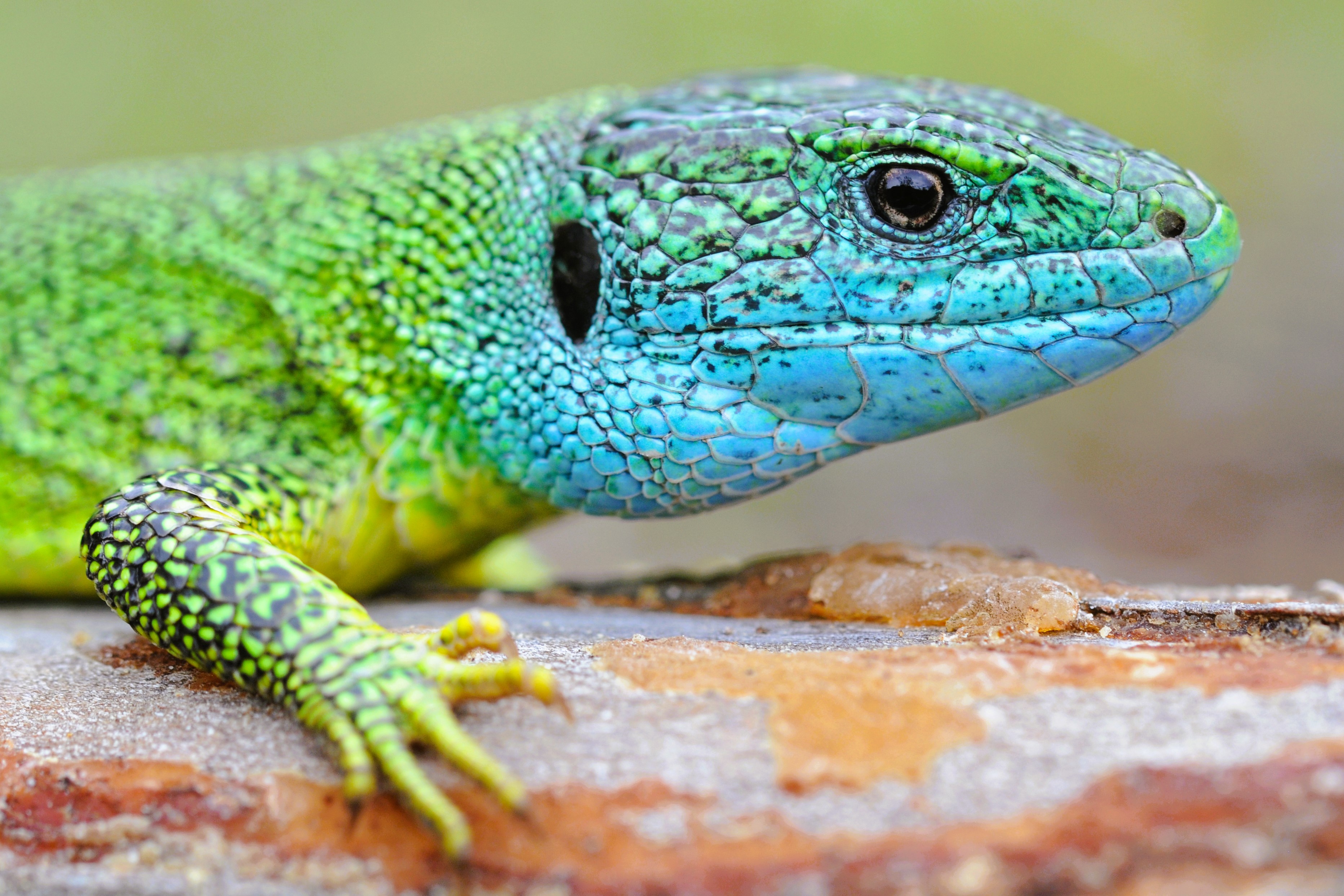
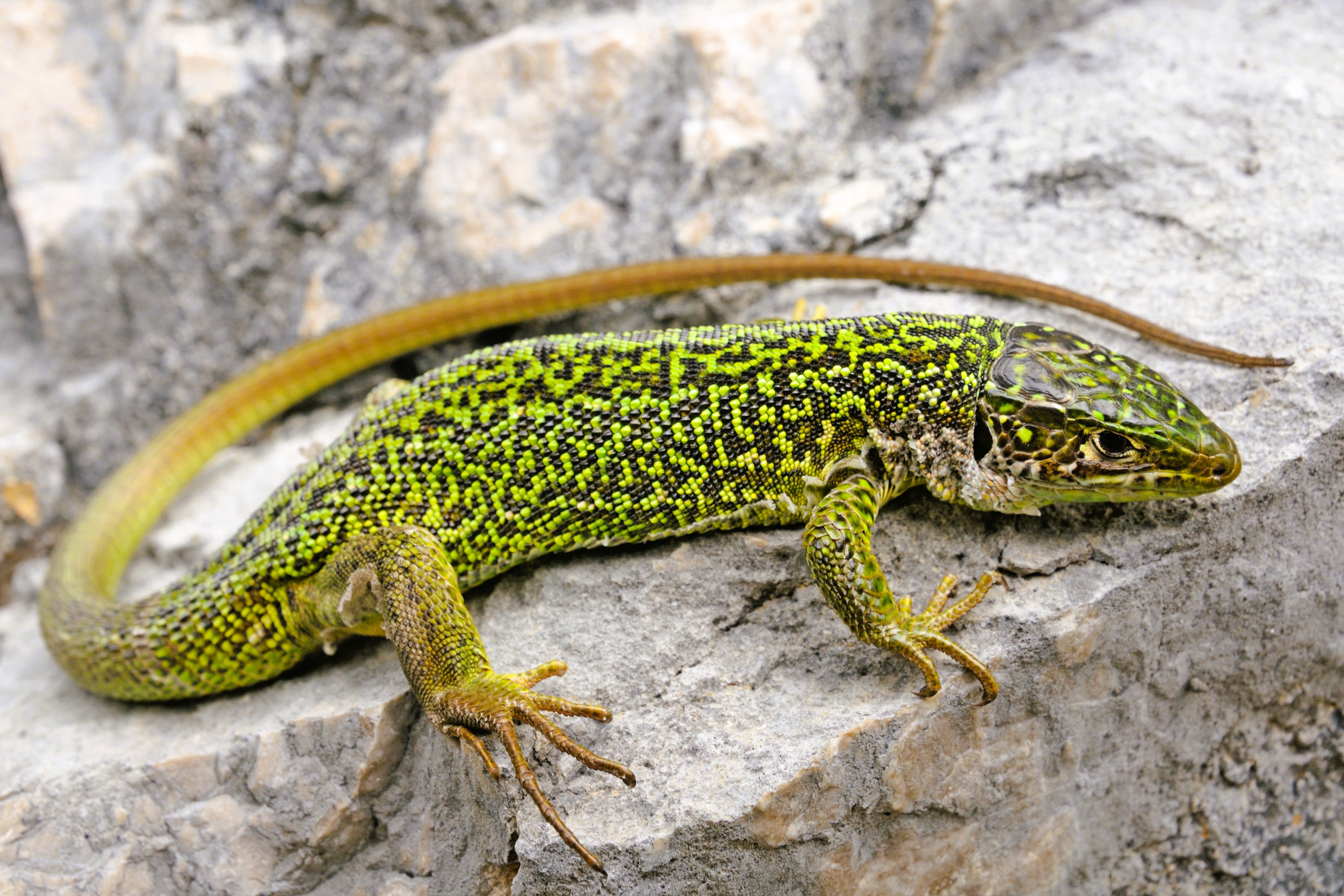
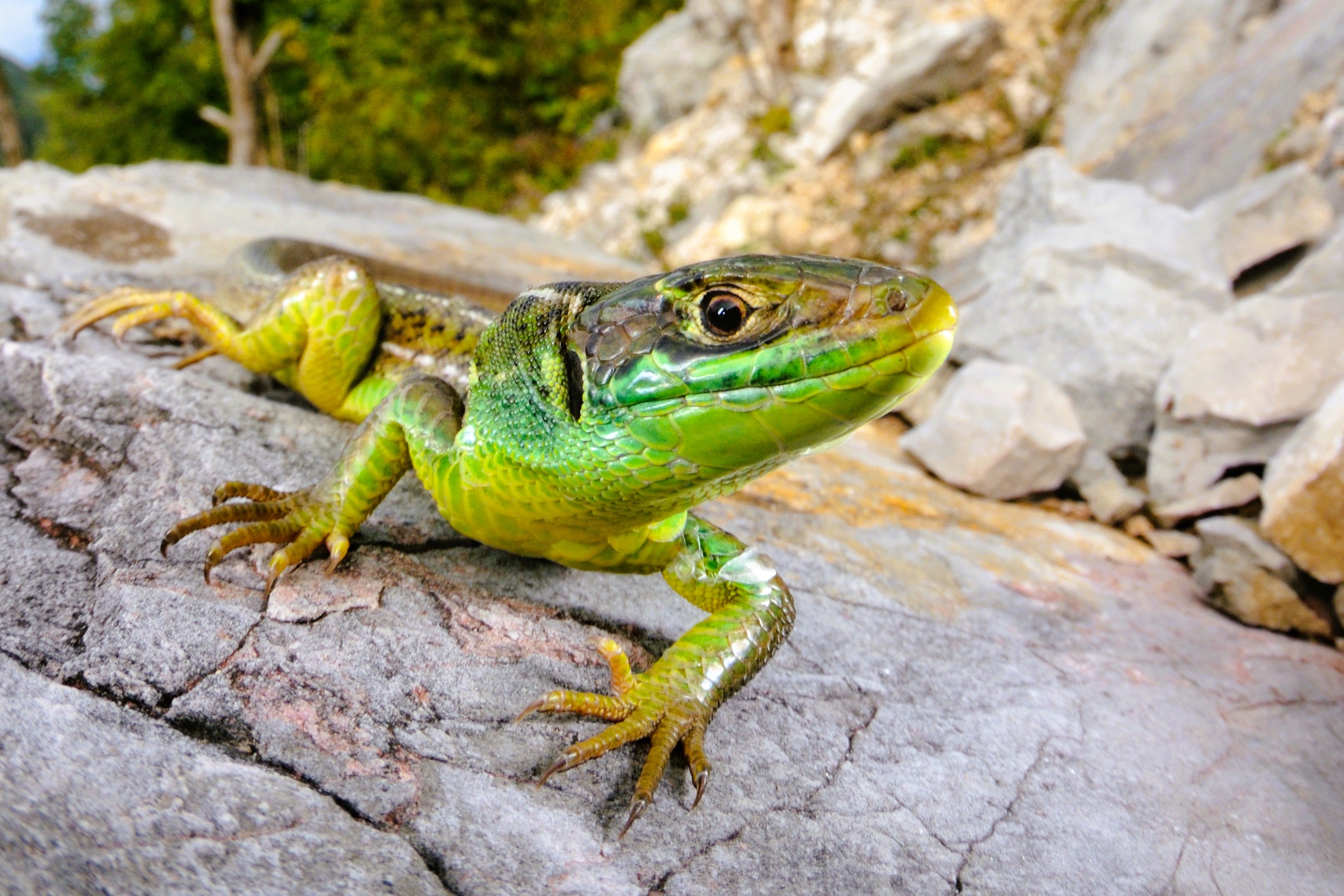
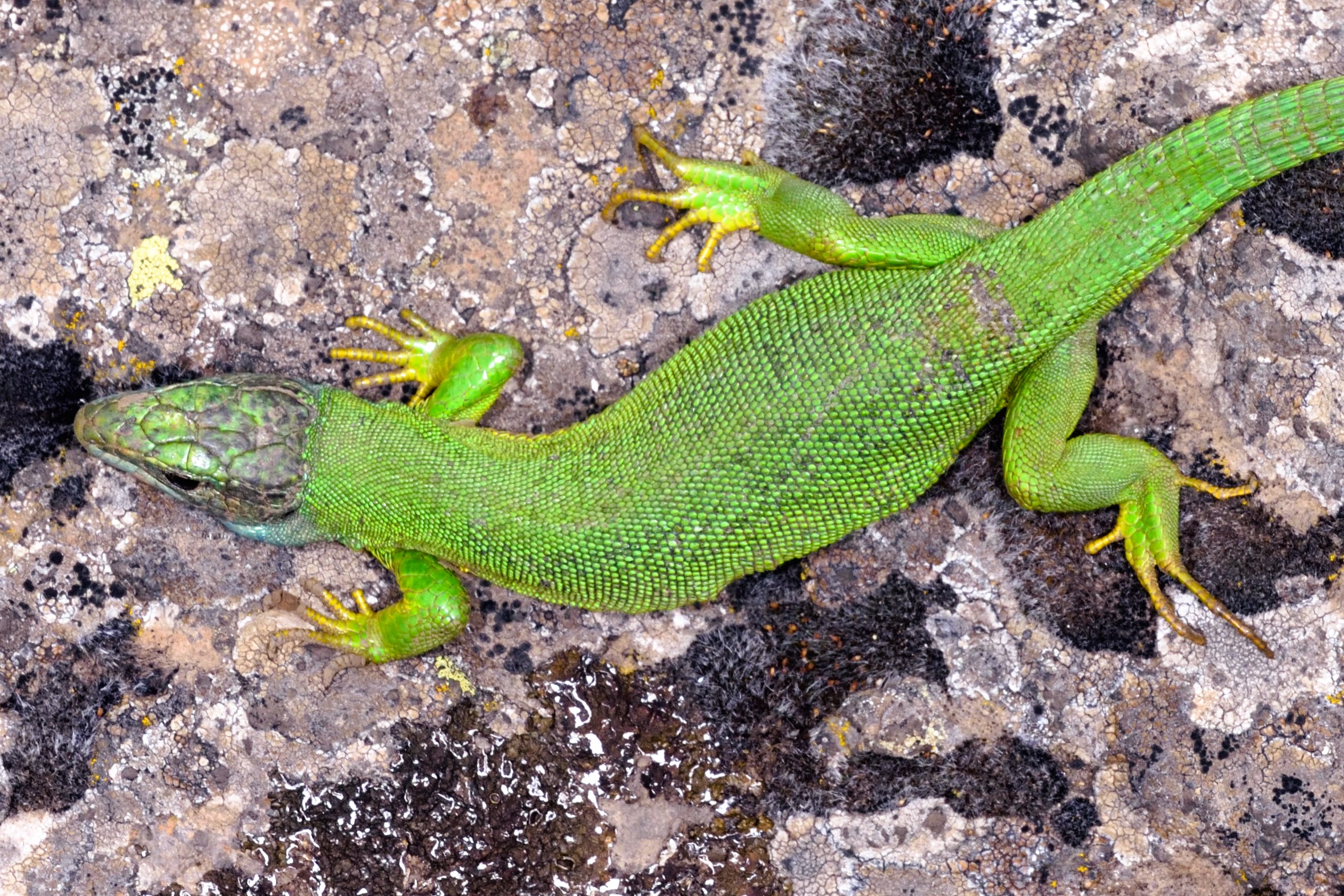
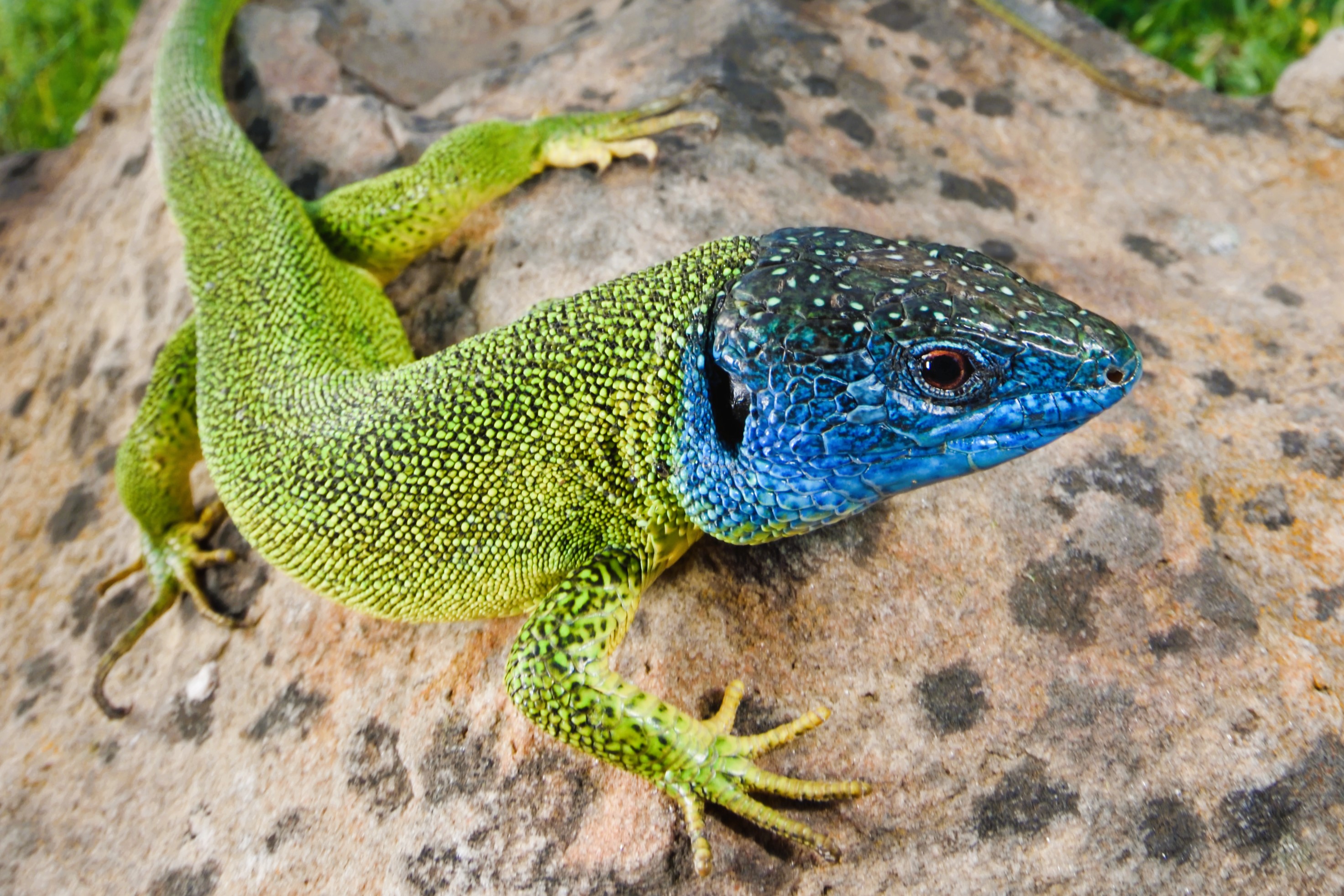
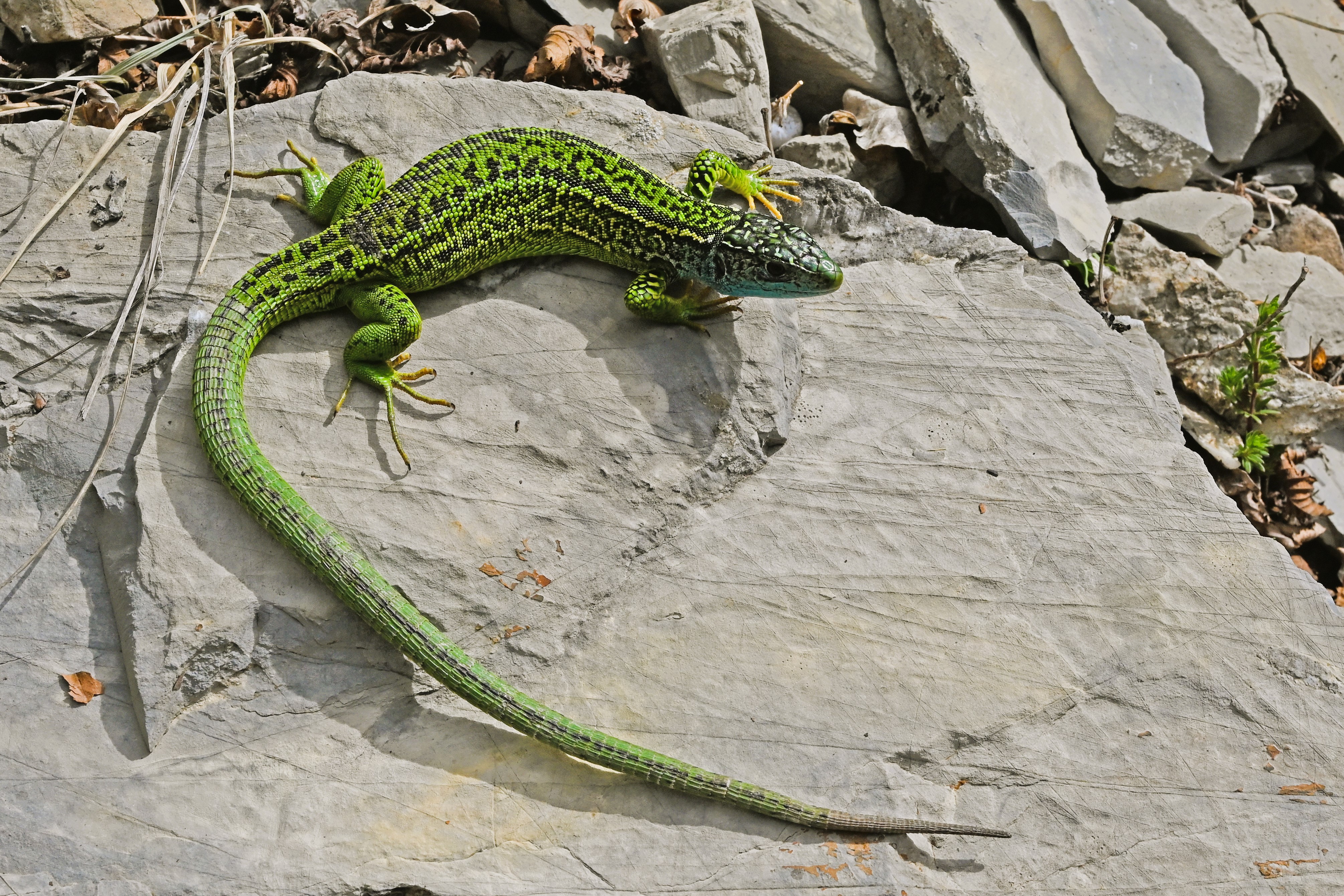
Reptilia → Squamata → Lacertidae → Lacerta → Lacerta bilineata
Laiò, Sgurbia, Lajö, Leirö, Lagö, Angö
The Western Green Lizard ( Lacerta bilineata ) is an elegant medium-to-large lizard, generally measuring 12–18 in (30–45 cm) in length, of which the long, tapering tail represents about two-thirds of the total.
The body is slender, the head robust but relatively small, with two clearly visible tympanic membranes standing out.
The predominant back color in males is bright green, enhanced by black or brown speckles and faint yellow or beige shading, while females can be entirely green, brown, or display both coloration types.
During the breeding season, the throat of males turns an intense blue, a definitive sign of sexual maturity.
Juveniles, by contrast, are brownish in color and measure just 1.2–2.4 in (3–6 cm) at birth.
These color variations, combined with agility and speed, make this species particularly adaptable and hard to confuse with other local lizards.
The Western Green Lizard is distributed across southwestern Europe, including Spain, France, and much of Italy.
In Liguria, particularly in the province of Savona and western Liguria, the species is commonly encountered from sea level up to elevations above 3,300 ft (1 000 m).
Its apparent absence in some municipalities is probably due to insufficient systematic surveys rather than real limits of its range.
The Western Green Lizard is found in a wide variety of habitats thanks to its remarkable ecological adaptability: from broadleaf forests to hedgerows and brambles, shrubby areas, wet meadows, farmland, ruins, and clearings.
However, it prefers areas rich in shrubby vegetation and dense bushes, where it can find shelter among low branches or in dense vegetation tangles, rarely straying from places offering cover and thermoregulation opportunities.
Mainly diurnal, the Western Green Lizard stands out for its agility and strength.
It is an excellent climber, runner, jumper, and—even if necessary—a swimmer.
If captured or startled, it does not hesitate to bite forcefully.
Activity resumes from mid-March with the arrival of the first mild days and continues uninterrupted until late November.
During the breeding season, from April to June, males show pronounced territorial behavior, with chasing and sometimes fierce combat to secure mating rights.
About 4 weeks after mating, females lay 4 to 15 eggs in protected, well-drained locations.
Hatching occurs in late summer, between late August and September, and the young are immediately independent.
The diet of the Western Green Lizard is predominantly insectivorous, but this species is opportunistic: in addition to a wide variety of insects and other terrestrial invertebrates, it also consumes ripe fruit and does not disdain eggs or nestlings of small birds when the opportunity arises.
Adults are preyed upon by large birds of prey such as the Short-toed Snake Eagle (Circaetus gallicus), Golden Eagle (Aquila chrysaetos), and Eagle Owl (Bubo bubo), by snakes like the Montpellier Snake ( Malpolon monspessulanus ) and the Western Whip Snake ( Hierophis viridiflavus ), as well as by small predatory mammals like mustelids.
Juveniles face greater risks due to their small size and widespread predation.
Intensive use of agricultural pesticides represents a recent threat, contributing to the local decline of populations.
Widespread and well known in rural contexts, the Western Green Lizard has inspired numerous legends and popular beliefs over time, often without scientific foundation.
It is a symbol of local fauna and, thanks to its conspicuous presence, a protagonist of stories and traditions still circulating in the Ligurian countryside.